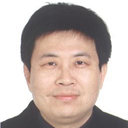Optical suppression of experimental seizures in rat brain slices.
Ключавыя словы
Рэферат
OBJECTIVE
To determine if a small ultraviolet emitting diode (UV LED) could release sufficient gamma-aminobutyric acid (GABA) from a caged precursor to suppress paroxysmal activity in rat brain slices.
METHODS
Electrophysiologic recordings were obtained from rat brain slices bathed with caged GABA: 4-[[(2H-benzopyran-2-one-7-amino-4-methoxy)carbonyl]amino]butanoic acid (BC204), at concentrations between 3 and 30 microm. Seizure-like activity was induced by perfusing slices with extracellular medium lacking magnesium and containing 4-aminopyridine (4-AP; 100 microm). A small, high-power UV LED was used to uncage BC204 and determine whether an increase in ambient GABA could alter normal or paroxysmal activity in the slice.
RESULTS
UV LED illumination, in the absence of BC204, had no effect on CA1 population spikes or seizure-like activity. The light did induce a small temperature elevation (<0.15 degrees C) over the current intensities and exposure durations used in these experiments. In the presence of BC204, UV light decreased the CA1 population spike and seizure-like activity. The BC204 effect can be best accounted for by release of GABA: The reduction of population spikes and seizure-like activity was blocked by the GABA antagonist picrotoxin, and BC204 illumination produced a membrane polarization that reversed at the expected potential for GABA(A) receptors.
CONCLUSIONS
These experiments establish that illumination of a low concentration of caged GABA with a tiny UV LED can release sufficient GABA to attenuate seizure-like activity in brain slices. Because our seizure model is very severe, it is probable that this technique would have a robust effect in human focal epilepsy.


